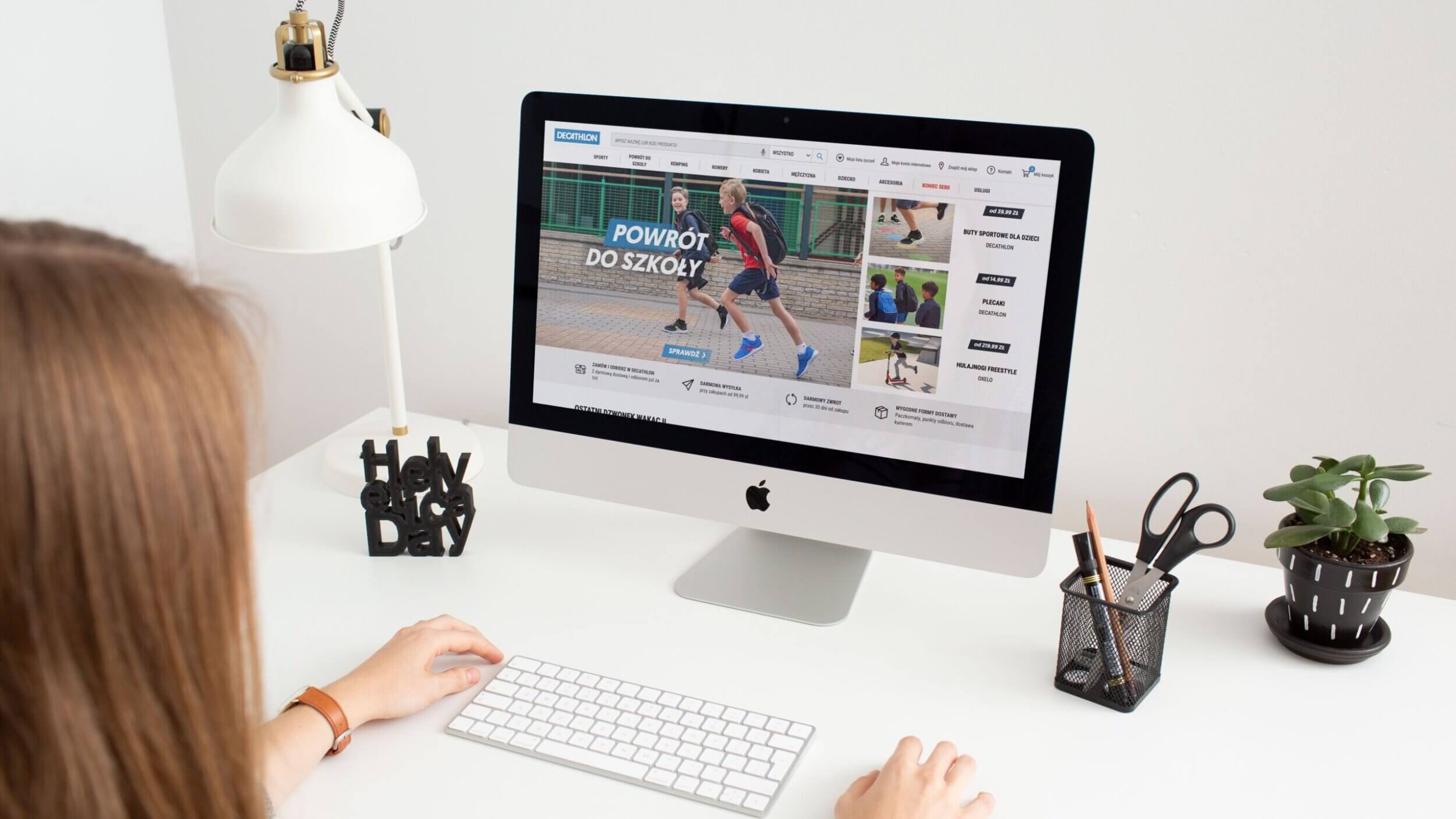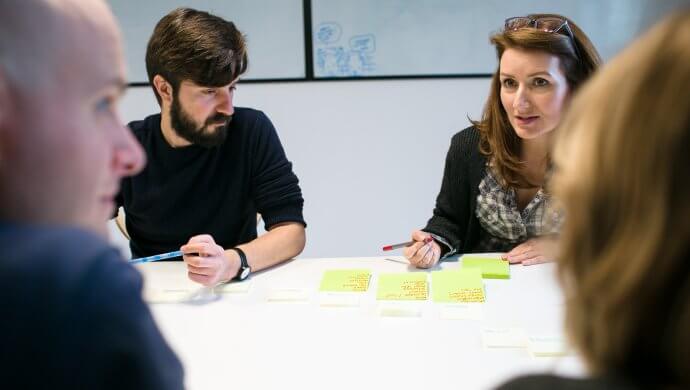In 2020, many companies had to enter the world of e-commerce at a cracking pace to respond to customer needs and expectations, further saturating an already highly competitive market. In such circumstances, ensuring a positive Customer Experience and User Experience is essential. UX research in e-commerce can effectively help design the optimal process. What are the typical research methods and which one to choose?
If you already manage an online store, you probably don’t need to be convinced how important user experience (UX) currently is; UX can ultimately influence whether the process is successful and whether you reach desired conversion levels. There are many methods and techniques in the field of e-commerce research that will help you make a proper diagnosis and improve your customers’ experience. If you are just kick-starting your e-commerce adventure, you will be interested in methods that will help you work out the basics, such as the information architecture of your new store. Read in what situations UX research in e-commerce will work for you.
UX research in e-commerce – test your solution with users
Usability testing is probably among the best known and most frequently performed types of research, and the case is no different in the e-commerce area. As the name suggests, a usability test is a study conducted to determine the degree of usability of a website or application, in your case an online store or shopping application. An online store test can be successfully conducted remotely.
The research should involve current or potential customers of your store or people who share the profile of the target group for the products you sell. Under the watchful eye of a moderator, respondents interact with the website according to a pre-developed scenario.
For example, the tasks may involve creating a customer account, purchasing a specific product, or finding specific information, e.g. about possible return dates.
The moderator observes the participants’ reactions to each task and analyses the difficulties they encounter. The problems spotted can range from a stop or a critical problem interrupting the shopping process, to difficulties in choosing the preferred place of delivery, to problems in continuing the process due to poor visibility of CTA buttons, insufficient visibility of specific content, or a less-than-intuitive sequence of steps.
Analysing the sessions, the researcher identifies the problems that occurred, determines their causes, and proposes solutions that will allow you to solve them and ensure a smooth shopping process and positive customer experience, which for you will translate into more finalised transactions.
Remember that you don’t have to have a fully functioning store to subject it to such tests. Your online store can be tested at any stage of development.
E-commerce research – when will a usability audit help?
Another method, extremely often used in the field of e-commerce research, is a UX audit. Usability audit, or expert assessment, is aimed at checking the usability of a shopping application or online store and its compliance with good UX design practices. An experienced expert walks through the same processes and tasks on the site or in the app that a user typically performs.
The expert tests look for both usability-enhancing solutions and bugs or aspects that need improvement. Of course, everything follows a specific procedure.

Usability audit includes cognitive walkthrough and heuristic walkthrough. Cognitive transition is a review of key paths and processes for a website or application. In your case, it will be primarily the purchase process, but also other processes: account creation or order return. The expert simulates an online store visit, trying to complete these processes.
A heuristic walkthrough is an assessment of whether a website or a shopping application complies with the so-called heuristics, i.e. a set of good interface design practices. As a result of the audit, you will receive a comprehensive list of errors or imperfections in the system along with recommendations on how to improve them.
At EDISONDA, we conduct UX research in e-commerce very frequently. We have developed our own method of e-commerce audit. Based on our years of experience we prepared an extensive list of heuristics including more than 130 criteria grouped into 7 key areas for e-commerce. The list allows us to catch the vast majority of errors and areas for improvement.
Want to learn more about our e-commerce healthcheck?
Even more practice – Service Safari
Less frequently used but providing great value is service safari or product safari. It is a method in which a researcher takes on the role of a customer and performs certain actions, e.g. completing a purchase in an online store, making a return, or reporting a problem via a chatbot. The method is a bit like the commonly known Mystery Shopping. It helps get to know the processes, as well as to find out what positive and negative impressions they make at certain stages.

When embarking on a service or product safari, the first step is to define the objectives, i.e. to determine what we want to find out and what research questions we want to answer, e.g. how does the return process work from the customer’s perspective? Then we define the scope, i.e. which services or products we want to look at and which specific tasks or user goals we want to look at, e.g. choosing a convenient form of return.
While performing the service/product safari, we make notes and record our observations at each stage. These can be digital notes in the form of pictures (e.g., documenting the necessary return forms to be enclosed or the type of packaging that allows the products to be sent back in a parcel), screenshots or recordings (e.g., presenting online return forms), or in any other form showing what the user experience looked like.
Thanks to such collected data, you will see what the User Experience and Customer Experience of your clientele really look like, and in addition to mapping out the situation, we will provide you with conclusions and suggestions on what you can do to make this experience better.
For example, we performed a service safari as part of the e-commerce Basket of the Year 2019 study. In this edition of the study, we looked at the return process. We analyzed the sales contract withdrawal process in 50 different online stores for an in-depth look at the returns of purchased products.
When you think about architecture – Card Sorting and Tree Testing
What if you are in the early stages of creating an online store? Surely you are asking yourself what the category tree of your products should look like. The card sorting method will help you create an information architecture that is intuitive and reflects the users’ mental model. This is an exercise which you invite potential users of your store or shopping application to, your target group representatives. Thanks to this study, you will learn how to best group the products that your store offers. The result of the test is the information architecture, i.e. the structure and names of product categories, delivered in the form of a navigation tree. The existing tree can be evaluated using tree testing, a technique also called reverse card sorting. Not unlike usability tests, card sorting or tree testing sessions can be conducted remotely.
Card sorting itself has several variations. If you are just creating a structure, it is best to use open sorting. In open sorting, participants are given a pre-made list of items and their job is to group the items and name the groups. If you already have category names, but do not know how users will assign items to them, it is best to use closed sorting. Participants get a list of items and category names at the start. If you are just creating a list, use a variant called a free list. Participants, knowing what the website or shopping application is to be about, decide for themselves which elements they would like to include, name them, and group them.
Tree testing allows you to test the finished structure. The participants’ task is to find specific elements in the hierarchy. The test lets to verify whether the categorization is clear and whether the names of elements are unambiguous. Thanks to this test you will find out whether your client can easily find the product they are looking for.






